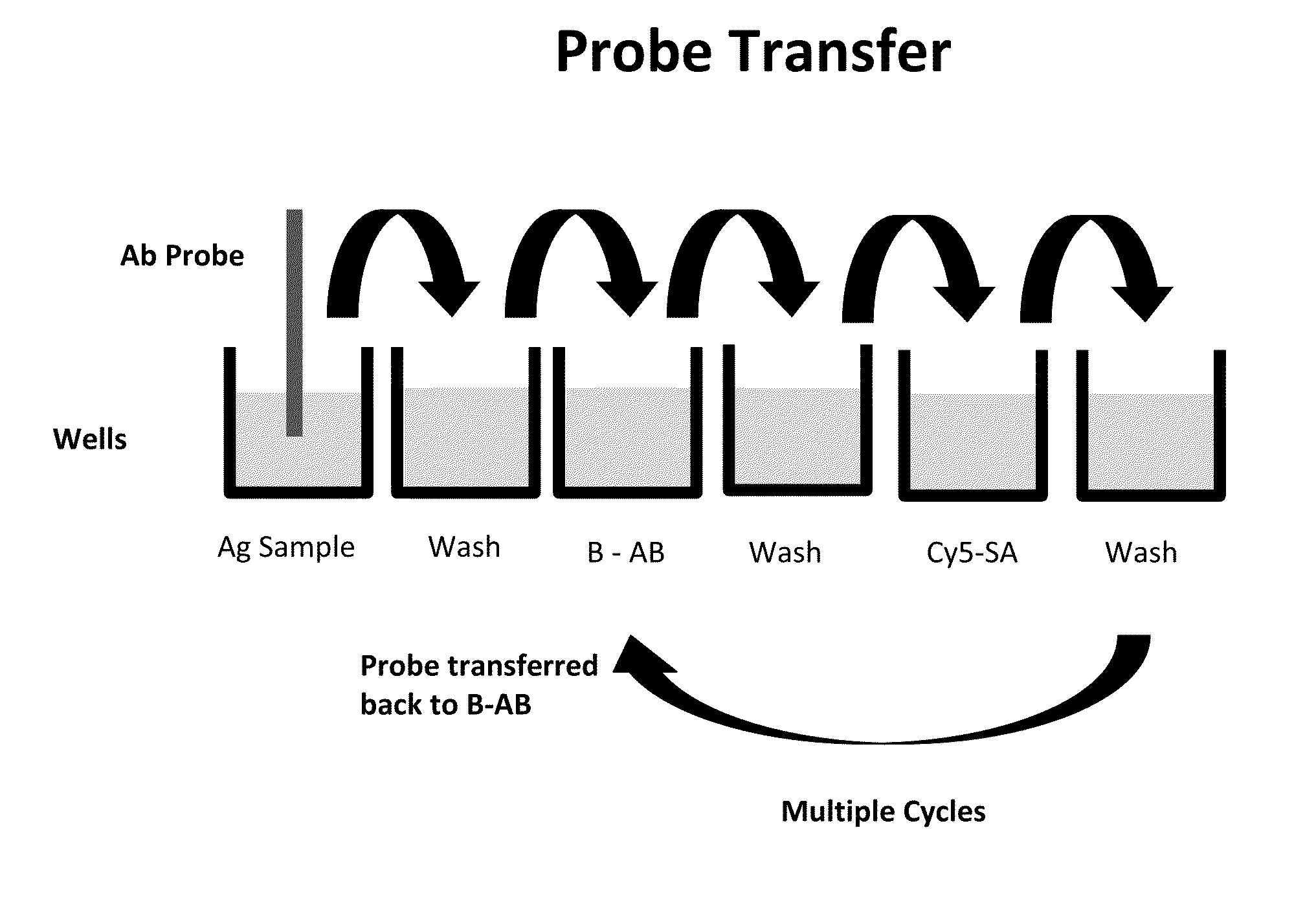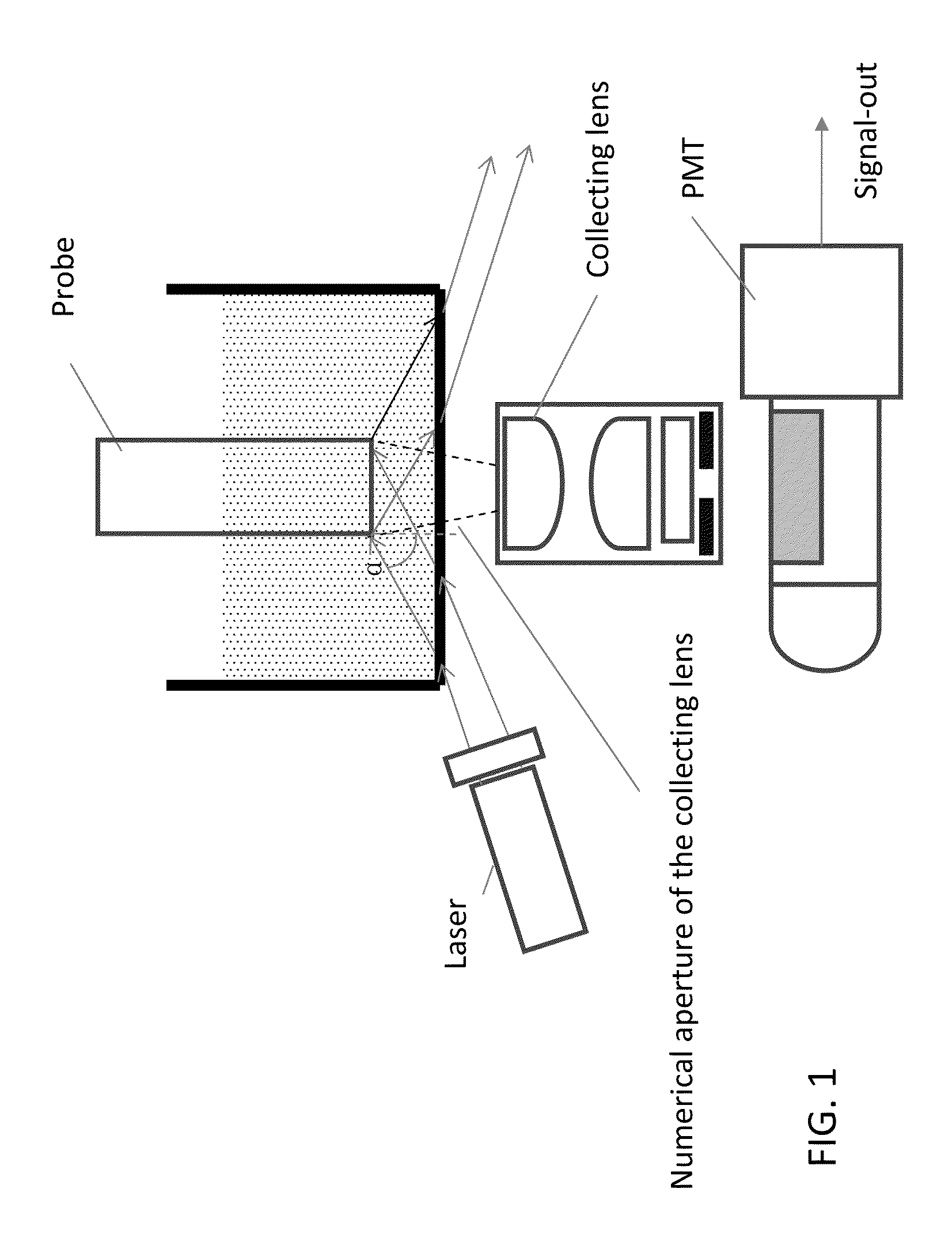Luminescent polymer cyclic amplification
a technology of cyclic amplification and fluorescent dyes, applied in the field of detecting analyte, can solve the problems of significant overlap between the excitation and emission spectra of the dye, the disadvantage of fluorescent dyes compared to other detection methods, and the inability to detect fluorescent dyes in the presence of immobilised reagents, etc., and achieves high sensitivity
- Summary
- Abstract
- Description
- Claims
- Application Information
AI Technical Summary
Benefits of technology
Problems solved by technology
Method used
Image
Examples
example 1
Preparation of Probe Having Immobilized First Antibody
[0068]Quartz probes, 1 mm diameter and 2 cm in length, were coated with aminopropylsilane using a chemical vapor deposition process (Yield Engineering Systems, 1224P) following manufacturer's protocol. The probe tip was then immersed in a solution of murine monoclonal anti-fluorescein (Biospacific), 10 μg / ml in PBS (phosphate-buffered saline) at pH 7.4. After allowing the antibody to adsorb to the probe for 20 minutes, the probe tip was washed in PBS.
[0069]Capture antibodies for troponin I (TnI) and brain naturetic peptide (BNP), obtained from HyTest, were labeled with fluorescein by standard methods. Typically, there were about 4 fluorescein substitutions per antibody. Anti-fluorescein coated probes were immersed in fluorescein labeled capture antibody solution, 5 μg / ml, for 5 minutes followed by washing in PBS.
example 2
Preparation of Crosslinked FICOLL® 400-SPDP
[0070]Crosslinked FICOLL® 400-SPDP (succinimydyl 6-[3-[2-pyridyldithio]-proprionamido]hexanoate, Invitrogen) was prepared according to Example 1 of US 2001 / 0312105. FIG. 5 shows a flow chart of its preparation.
example 3
Preparation of Cy5-Streptavidin
[0071]32 μL of Cy 5-NHS (GE Healthcare) at 5 mg / ml in DMF reacted with 1 ml of streptavidin (Scripps Labs) at 2.4 mg / ml in 0.1 M sodium carbonate buffer pH 9.5 for 40 minutes at 30° C. Applying the mixture to a PD 10 column (Pharmacia) removed unconjugated Cy 5. Spectral analysis indicated 2.8 Cy 5 linked per streptavidin molecule.
PUM
| Property | Measurement | Unit |
|---|---|---|
| diameter | aaaaa | aaaaa |
| autofluorescence wavelengths | aaaaa | aaaaa |
| emission wavelength | aaaaa | aaaaa |
Abstract
Description
Claims
Application Information
 Login to View More
Login to View More - R&D
- Intellectual Property
- Life Sciences
- Materials
- Tech Scout
- Unparalleled Data Quality
- Higher Quality Content
- 60% Fewer Hallucinations
Browse by: Latest US Patents, China's latest patents, Technical Efficacy Thesaurus, Application Domain, Technology Topic, Popular Technical Reports.
© 2025 PatSnap. All rights reserved.Legal|Privacy policy|Modern Slavery Act Transparency Statement|Sitemap|About US| Contact US: help@patsnap.com



